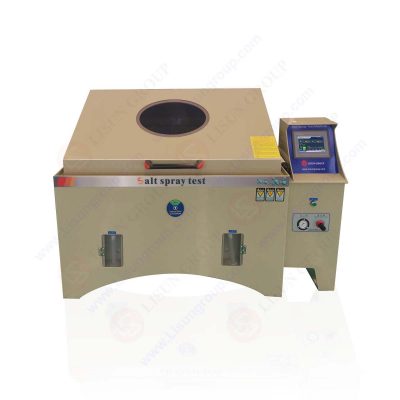
Corrosion testing is widely employed in quality assurance laboratories within the metal industry as a critical step in quality control testing. These tests are typically conducted in salt spray test chambers, covering a range of tests for black metals and alloys. Additionally, corrosion testing is also carried out in the paint and coating industry to ensure the quality of coatings, thereby extending the lifespan of black metals.
While corrosion may be considered a neglected topic, its impact on black metals cannot be overlooked. In environments rich in salt, these materials undergo occasional reactions with iron, triggering oxidation reactions that convert ferrous ions into ferric oxide.
Over time, these oxidation reactions not only lead to complete product destruction but also provide a breeding ground for microbial reactions, accelerating product damage and failure. To avoid such situations, the paint and coating industry is actively improving the durability of their products and coatings.
Coatings play a crucial role in this regard, as they can restrict the entry of moisture or any contaminants, effectively preventing corrosion. However, low-quality coatings may fail to provide adequate protection, as they may expose the surface to moisture, ultimately leading to oxidation. Therefore, to ensure the quality of coatings, artificial accelerated salt spray testing becomes an indispensable tool.
The paint and coating industry is committed to improving the quality of products and coatings to address the challenges posed by time and external environments. Through continuous improvement and rigorous quality control, they ensure that products can provide reliable performance and long-term protection, meeting customer needs and ensuring sustainable product use.
YWX/Q-010_Salt Spray Test Machine
Operating Salt Spray Test Chamber
Before conducting salt spray tests, it is crucial to understand the working principles of salt spray test chambers. Here are the key steps for operating a salt spray test chamber:
Understanding the Working Principles: Salt spray test chambers simulate salt conditions and even accelerate corrosion testing. This is achieved by simulating a salt spray environment.
Preparing Specimens: Samples can be fasteners or thinly coated metal plates. For non-flat samples like bolts, they can be suspended using threads and thin rods. The rods used for suspending nuts and bolts are retained as hangers in the chamber. For flat metal sheets or plates, they can be easily fixed on the sample carrier area of the chamber.
Closing the Chamber and Setting Parameters: Ensure that the chamber is securely closed and set relevant parameters such as temperature and test cycle.
Starting the Test: Initiate salt spray spraying to start the test. Maintain stable parameters such as temperature and test cycle throughout the test.
By following these steps, you can conduct salt spray tests correctly and ensure the accuracy and reliability of the test.
To ensure the accuracy and reliability of salt spray tests, specific environmental requirements are necessary for the salt spray test machine:
• Temperature Range: The ambient temperature should be between 10 to 40°C.
• Relative Humidity: The relative humidity should not exceed 85% RH.
• Absence of Dust and Corrosive Substances: The air should be free from high concentrations of dust and corrosive substances to avoid affecting the test results.
• Avoidance of Sunlight and Heat Sources: Direct exposure to sunlight or other heat sources on the test machine should be avoided.
• Absence of Strong Vibrations: Strong vibrations around the test machine should be avoided to maintain a stable test environment.
• Horizontal Placement: The test machine should be placed horizontally and kept stable to ensure the accuracy of the test process.
• Avoidance of Strong Airflows: Strong airflow directly blowing onto the test machine should be avoided to prevent interference during the test.
• Absence of Strong Electromagnetic Field Influence: There should be no strong electromagnetic field influence around the test machine to avoid interfering with its normal operation.
• Adhering to these environmental requirements ensures the stability and accuracy of salt spray tests, resulting in reliable test results.
https://www.lisungroup.com/news/technology-news/understanding-the-principle-and-testing-environment-requirements-of-salt-spray-test-chambers-for-corrosion-testing.html
.jpg)
Comments
Post a Comment